Last Updated on August 26, 2023
What can you expect from Microsoft Stream?
In this article, I will share the current features of Microsoft Stream on SharePoint and its upcoming features.
Let’s get started.
Table of Contents:
What is Microsoft Stream?
Think of Stream as a service like YouTube (though it’s a bit more private and less flashy).
Basically, Microsoft Stream is a video-sharing platform that’s designed for businesses and organizations.
Similar to YouTube, users can:
- Upload videos
- Share videos
- Manage videos
But it also gained a lot of advanced features recently — like meeting recordings, automatically closed captions, etc.
Though Stream is versatile, it’s primarily designed for employee training, company announcements, and communication.
Sign up for exclusive updates, tips, and strategies
There are two versions of Stream:
- Microsoft Stream Classic
- Stream on SharePoint
Right now, the default version is the Stream on SharePoint — although you can always revert to the classic version anytime.
The new version integrates within SharePoint sites and makes videos one of the default content forms (or types).
That means you can easily attach videos like how you do with documents and share videos on pages or via other Microsoft apps.
Related: What is Microsoft Stream? How does it work with SharePoint?
What are the current features of Stream?
The Microsoft Stream service has come a long way from its classic version.
It now has features comparable to modern and even advanced video services out there.
Here are some of its key features:
1. The modern Stream experience
Right off the bat, Microsoft Stream now has its own start page (something that SharePoint had since its modern iteration).
It looks like this now:
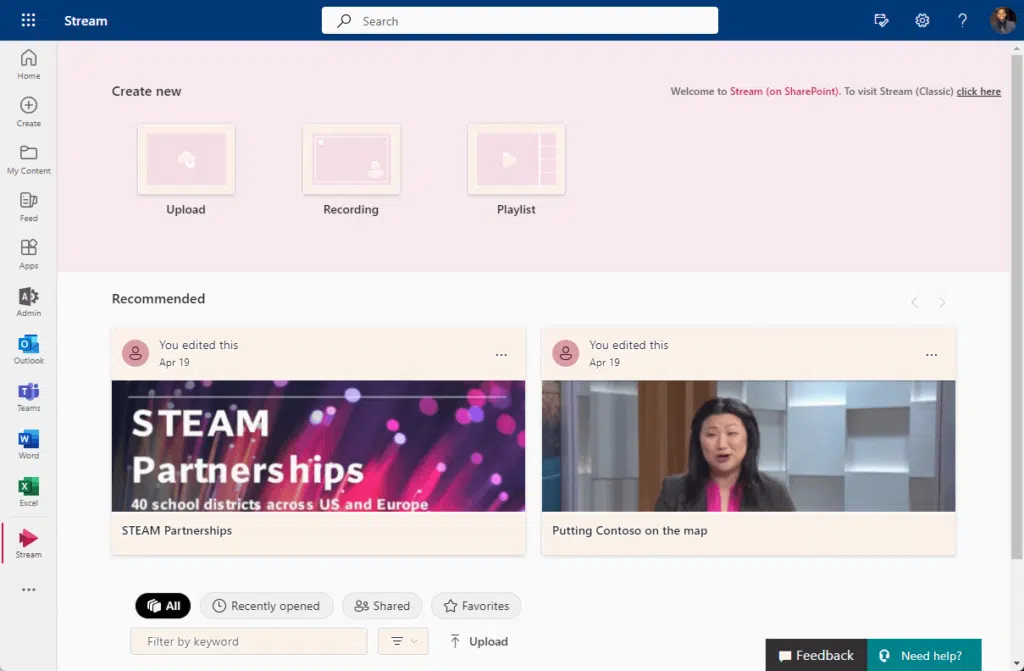
Related: Introductory Guide: SharePoint Online Modern Experience
I wrote earlier that Stream on SharePoint integrates videos as another content type.
Because of that, videos can be added and featured on pages along with other content types of like news, documents, etc.
Here’s what that looks like on a modern page:
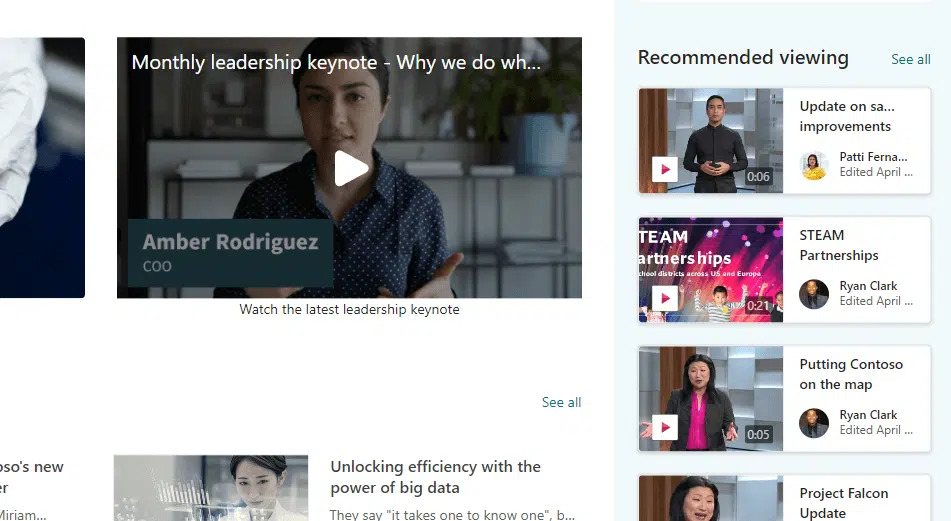
The modernization of Stream can even be felt on Microsoft Teams.
Even before, you can already create a videos tab on Microsoft Teams. But this time, it’s replaced by the modern Stream.
All the videos you upload to Microsoft Teams as well as the video files in the channels in your Team will show up on the videos page.
2. Create recordings, playlists, and more
Microsoft Stream also got an upgrade in the video creation department.
You can see from the image of the start page that there is now an option to create a new recording and playlist in Stream.
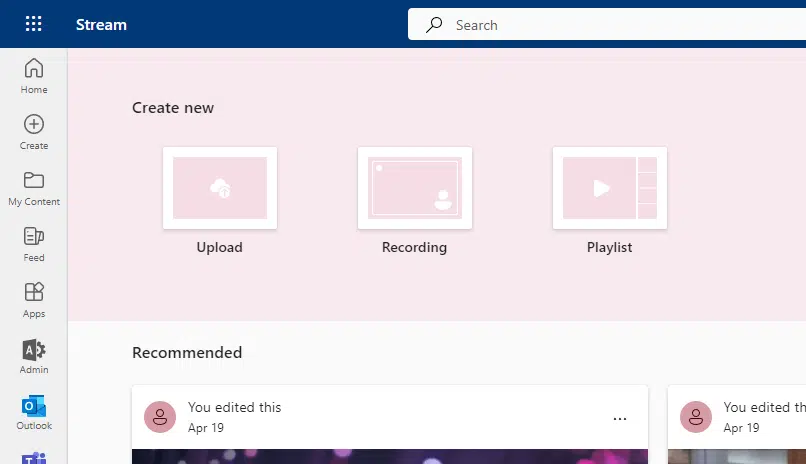
Similar to Microsoft Teams meeting recordings (where you can also use this feature), you can record yourself while doing a presentation.
Other notable features in recording include:
- Notation
- Filter
- Frame
- Board
- Photo
- Mirror video
- Teleprompter
If you create a playlist, you will be redirected to a Microsoft Lists page where you can create your own playlist.
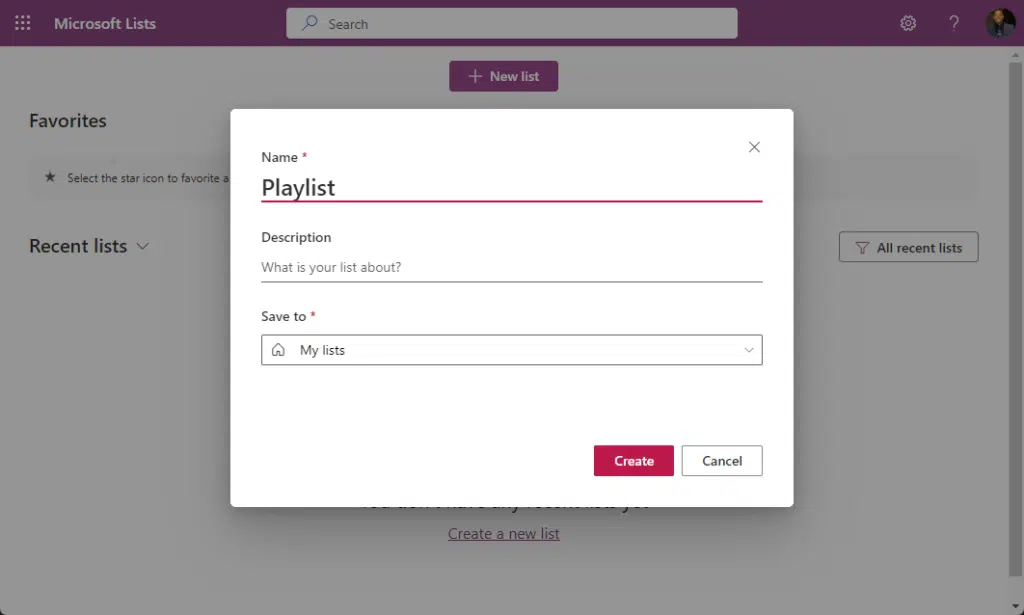
Related: Introduction to Microsoft Lists: The Modern SharePoint List
3. Video playback and enhancement features
I have mentioned this a bit in my introductory article on Microsoft Stream.
Since then, it seemed that Microsoft has even made Stream’s video playback features even better and more advanced.
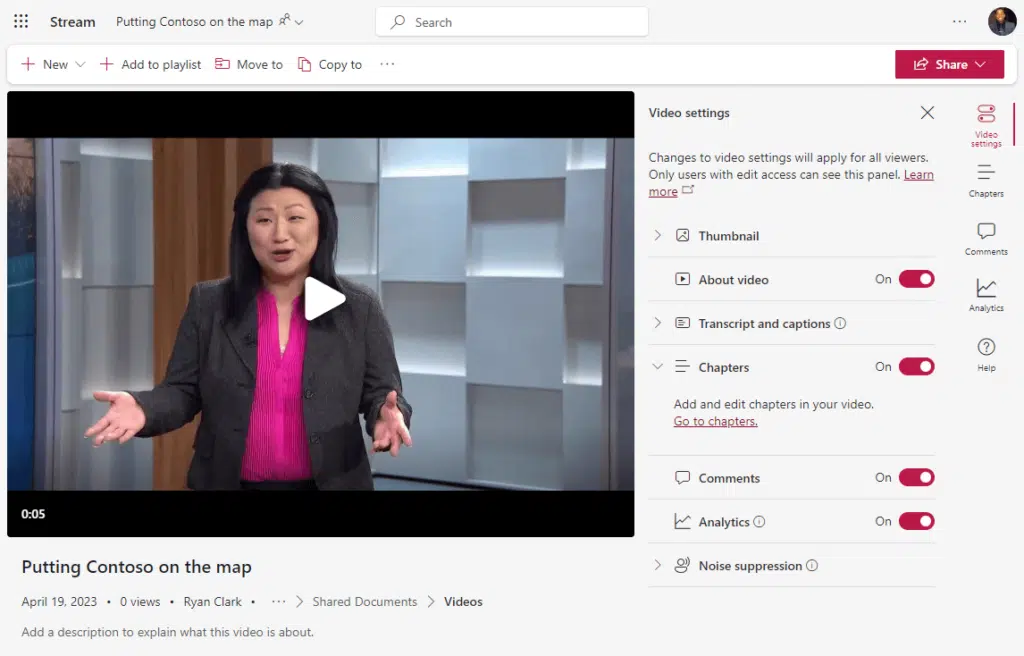
If you check on video settings, you can mess around with:
- The video’s thumbnail
- Transcript and captions
- Chapters (has its own tab)
- Comments
- Analytics (has its own tab)
- Noise suppression
The enhancement features allow for a richer video viewing experience especially since you can now add chapters as well as the auto-generation of transcripts and captions.
Stream also has an adaptive bitrate playback that’s backed by a cloud delivery network.
It basically means that SharePoint and OneDrive, when playing videos, will use a different playback technology based on the video bitrate.
5. Sharing Stream videos
Since videos are now a content type, sharing them works similarly to when you share a document or a file with another person.
That means you can set permission settings on that specific video during sharing:
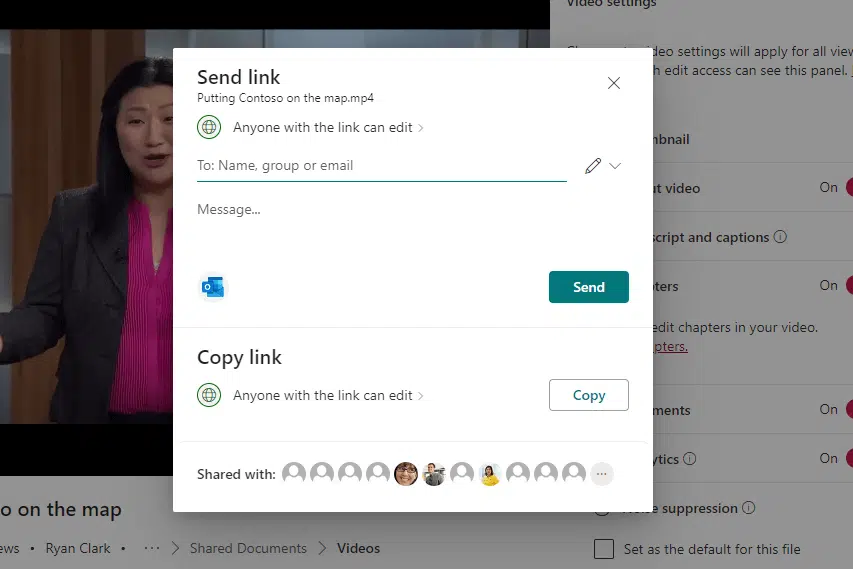
Like any other files in SharePoint/OneDrive, it uses enterprise-level security — and the same applications when sharing with unauthenticated users.
That means videos also have guest support so you can externally share them even outside the confines of your organization.
6. Video analytics, encryption, and more
I wrote earlier that analytics has its own tab now on Stream.
You can now see video statistics like all-time statistics, videos, and viewers for the last 7, 30, and 90 days.
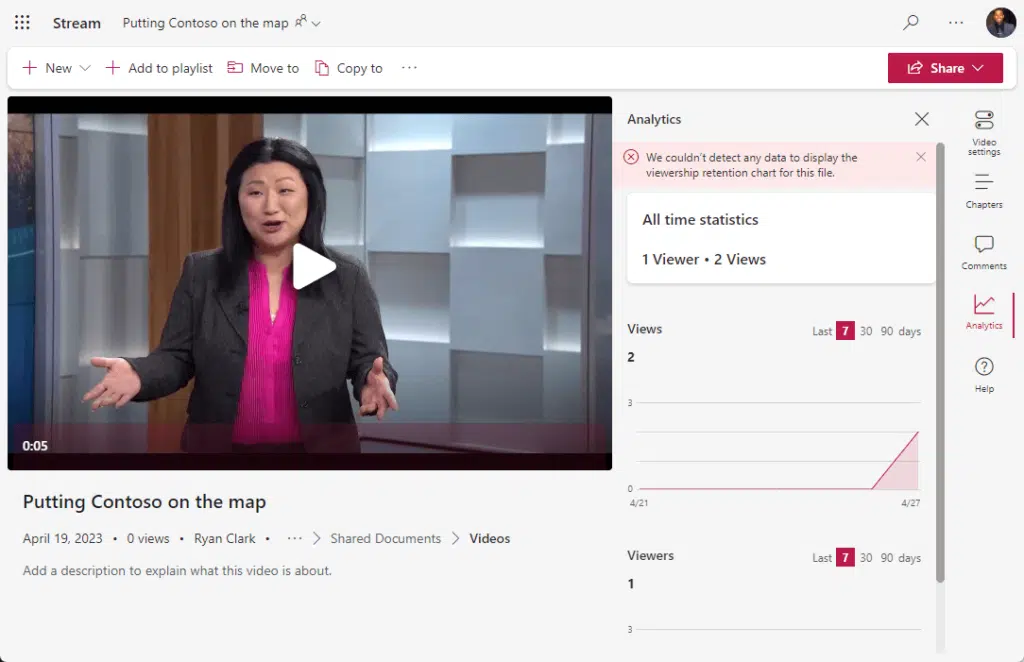
Other relevant features here include:
- More regional data centers for video availability
- Service encryption through Microsoft Purview Custom Key support for videos
- Power Apps and Power Automate integration
Related: Creative Ideas for Microsoft Power Apps: Sharepoint-Ready?
Interesting features coming to Microsoft Stream
There are definitely more features for improved capabilities — you can even see them on Stream’s roadmap.
Some of the most interesting ones include:
- Inline playback of videos
- Upload videos through the Stream mobile app
- Video search transcript
Excited about Stream? How have you been using Stream in your organization? Share your thoughts below.
For questions about Stream and Microsoft 365, reach out using the contact form here and I’ll get back asap.

